Calendar analysis has become an essential tool for optimizing organizational efficiency. The meticulous examination of calendar data provides invaluable insights into how time is allocated, revealing patterns and trends in meeting and time management practices. This analysis helps identify areas where productivity may be hindered by inefficient scheduling or meeting overload.
By analyzing meeting frequencies, durations, participants, and recurring scheduling conflicts, leaders can gain a macro-level understanding of how time is being utilized within their teams. This initial dive into calendar data can uncover a range of issues – from excessive time spent in meetings to unbalanced distribution of work hours – that could be silently impacting the productivity and work-life balance of employees.
Identifying Issues with Google Calendar Analysis
Leaders can utilize Google Calendar analysis to identify potential inefficiencies in meeting and time management within their organizations. By examining calendar data, they can spot issues such as meeting overload, unbalanced schedules, or excessive time allocated to low-value meetings.
One key indicator of inefficiency is the density of meetings scheduled. If calendars are packed with back-to-back meetings, it often leaves little room for focused, productive work, potentially leading to burnout and decreased overall productivity. A 2021 study by Otter.ai found that 40% of workers spend at least half of their workweek in meetings, highlighting the prevalence of meeting overload in the modern workplace.
Another pattern that suggests inefficiency is the recurring scheduling of meetings that lack clear objectives or actionable outcomes. Meetings that consistently end without concrete decisions or next steps can be a sign of unproductive use of time.
Additionally, unbalanced schedules, where certain days are overloaded with meetings while others are relatively free, can disrupt work continuity and affect productivity. Effective time management involves spreading out meetings in a way that allows for ample deep work periods.
The "Now What?" Moment to Data Insights
Upon identifying issues in their calendar data, leaders are faced with the critical "Now What?" moment. This is where the insights drawn from calendar analysis need to be translated into actionable strategies for improving efficiency and productivity.
One of the first steps is restructuring meeting schedules. This involves evaluating the necessity and frequency of current meetings. Leaders should question whether each meeting serves a clear purpose and contributes to organizational goals. According to a study by the Harvard Business Review, reducing meeting frequency can lead to a 71% improvement in team collaboration and a 62% increase in team performance. This restructuring might include consolidating meetings, shortening their duration, or switching to bi-weekly or monthly meetings instead of weekly ones.
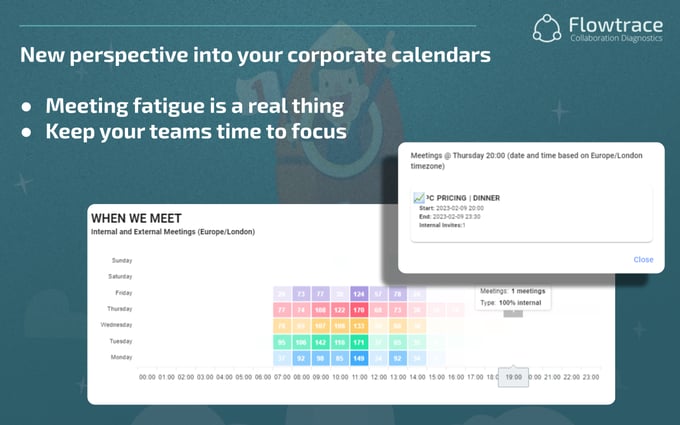
Another strategy is to actively reduce meeting frequency. This doesn't mean eliminating essential meetings but rather being more selective about scheduling them. Leaders should encourage their teams to consider alternative communication methods like emails, memos, or quick calls for matters that don't require a formal meeting setup. This approach can free up significant amounts of time for employees, allowing for longer periods dedicated to deep work.
Additionally, leaders can reallocate the time saved from fewer meetings to deep work. This might involve creating 'no meeting' blocks in calendars where employees can focus on individual tasks without interruptions. It's also beneficial to encourage a culture where deep work is valued and protected. This can be done by setting clear expectations about respecting these blocks and minimizing interruptions during these times.

Advancing Beyond Basic Analysis
While Google Calendar analysis is an effective starting point for identifying scheduling inefficiencies, Flowtrace elevates this process by offering a more sophisticated and in-depth solution for organizational efficiency improvement - Providing comprehensive insights that are crucial for a deeper understanding of how time and resources are utilized within an organization.
Our calendar analytics look into the nuances of meeting patterns, communication flows, and collaborative practices. Unlike basic calendar tools, our app offers a multi-dimensional view of organizational time management. It assesses not just the quantity of meetings but also their quality, participant engagement, and the balance between meeting time and productive work. This level of detail enables leaders to identify not only how much time is spent in meetings, but also how effectively that time is used.
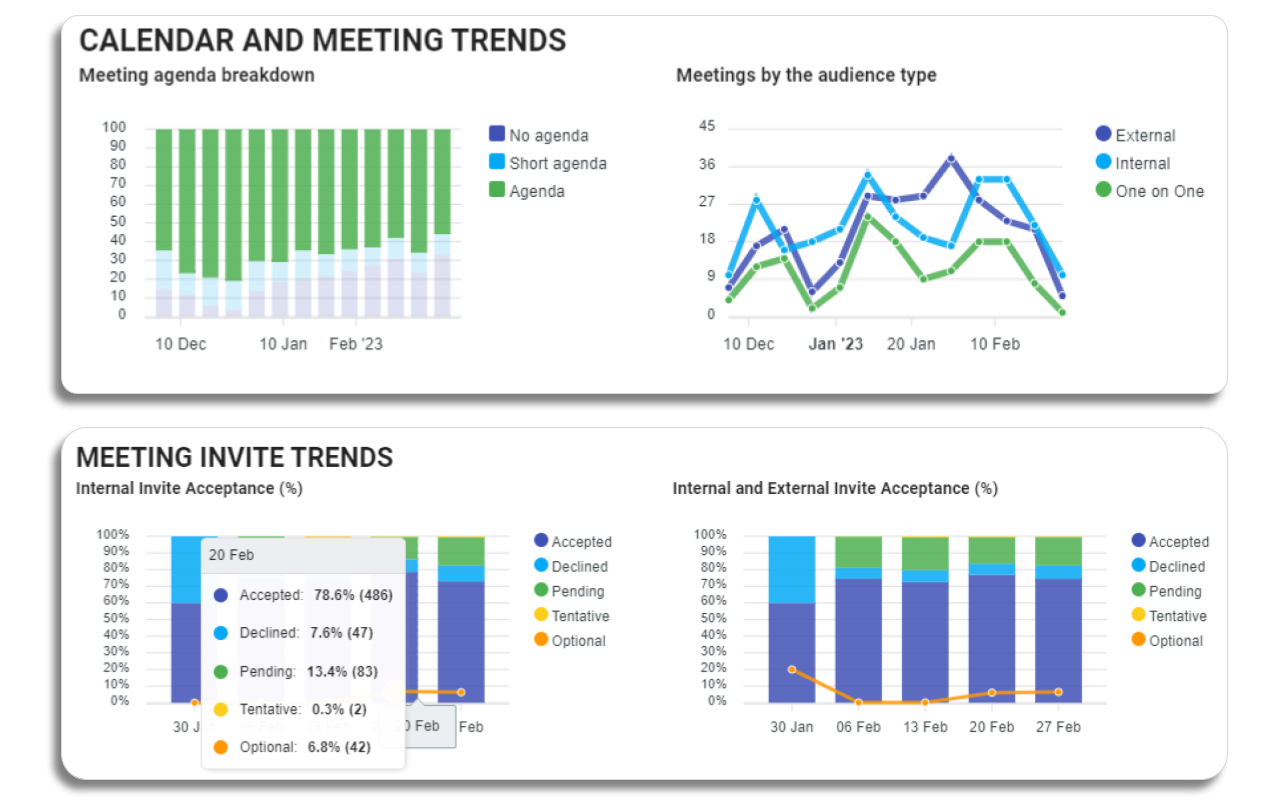
Flowtrace integrates seamlessly with an organization's existing communication and scheduling tools like Google Calendar, providing a holistic view of how work is conducted. This integration allows for real-time analytics and insights, plus the Google Cost Calculator feature which displays policies and associated costs before scheduling meetings. Leaders can utilize this to pinpoint specific areas where meeting practices can be optimized, such as identifying departments or teams that may be experiencing meeting fatigue, or recognizing opportunities to redistribute meeting schedules more evenly.
Another key feature is its ability to track the impact of implemented changes over time. This means that once an organization adjusts its meeting strategies based on Flowtrace's insights, it can continue to monitor the effectiveness of these changes, ensuring continuous improvement in meeting efficiency and overall organizational productivity.
Implementing Change with Flowtrace
Flowtrace can help drive change in meeting culture and time management. Its features are designed to facilitate effective and sustainable improvements within an organization. Here are some of the ways our app can help:
- Data-Driven Decision Making: It offers detailed analytics on meeting frequency, duration, and participation enabling leaders to make informed decisions about which meetings are necessary and how they can be conducted more efficiently.
- Optimizing Meeting Schedules: Through its advanced analytics, it helps in restructuring meeting schedules to enhance efficiency. This might involve reallocating meeting times to prevent disruption of deep work periods or evenly distributing meetings throughout the week to avoid overload on specific days.
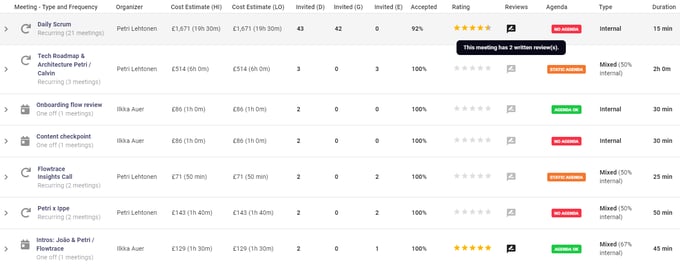
- Improving Meeting Quality: It helps identify meetings with low engagement or participation, prompting leaders to investigate and address the underlying issues, such as unclear agendas or irrelevant topics.
- Optimizing Schedules for Deep Work: We provide insights into the distribution of meetings throughout the workday and workweek, enabling leaders to restructure team meetings to minimize disruptions to focused work periods.
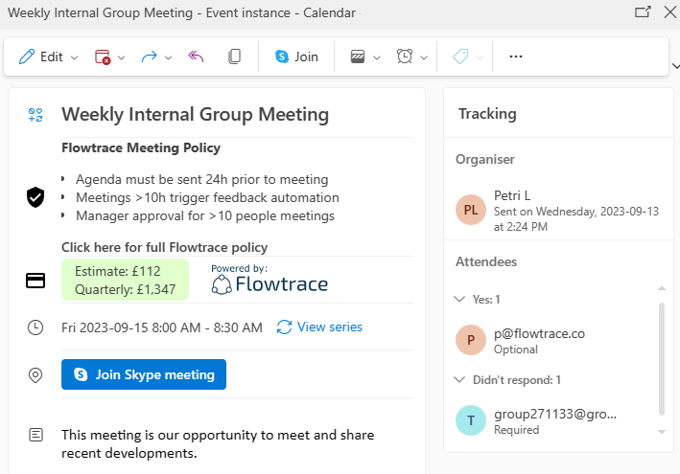
- Encouraging a Culture of Efficiency: Ongoing analytics support a culture of continuous improvement. Organizations can regularly review meeting data to ensure that changes are yielding the desired results and to make further adjustments as needed.
- Analyzing Meeting Effectiveness: This includes assessing the relevance of meeting topics, participant engagement, and the outcomes achieved. By providing detailed analytics on these aspects leaders can identify meetings that are essential and productive versus those that could be streamlined or eliminated.
Maximizing Organizational Productivity with Flowtrace
Flowtrace provides a solution for maximizing organizational productivity by enabling continuous monitoring and adjustment of meeting practices. The advanced analytics capabilities allow organizations to not only identify inefficiencies in their current meeting structures but also to implement and track the effectiveness of changes over time. This ongoing process of assessment and adjustment is key to cultivating a dynamic meeting culture that adapts to the evolving needs of the business and its workforce.
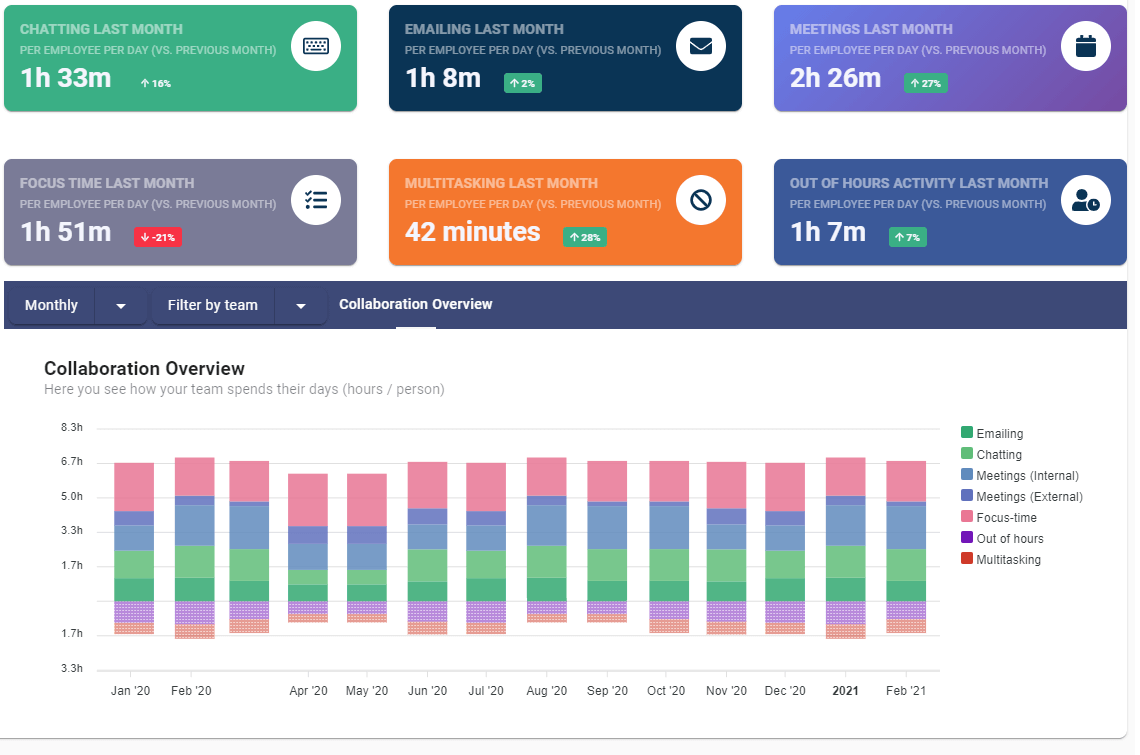
By providing detailed insights into how meeting time is allocated and utilized, leaders are empowered to make data-driven decisions that enhance productivity. This could involve restructuring meeting schedules to allow for longer periods of uninterrupted deep work, reducing the frequency of less critical meetings, or even altering the format of meetings to make them more efficient.
Additionally, the capabilities extend to understanding the interplay between meetings and overall workplace productivity. It helps identify patterns that may lead to meeting burnout and proposes actionable solutions to mitigate this. By highlighting the balance between collaborative time and individual deep work periods, Flowtrace ensures that meetings contribute positively to the organization's goals without compromising the well-being and productivity of its employees.
Conclusion
Google Calendar analysis offers valuable insights into understanding and identifying inefficiencies in organizational time management. This approach provides leaders with a baseline insight into how meetings are structured and distributed, highlighting potential areas for improvement in terms of meeting overload and unbalanced schedules. However, to truly capitalize on these initial findings and implement effective, lasting changes, a more advanced and comprehensive solution like Flowtrace becomes indispensable.
